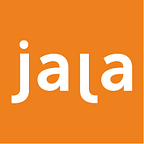He, She, It, or They:
Which Box Should We Tick?
How different languages express gendered identities.
As we fill up nerve-racking forms, there are normally two options to choose from when it comes to gender: female / male.
This is how our gender has long-been defined — through our sex.
What if a community identifies five genders?
In the case of Indonesia’s Bugis society, these five genders are identified as: makkunrai (women), oraini (men), calabai (male women), calalai (female men), and finally, bissu, the gender that encompasses all four.
The conflict between what we understand as sex and gender is nothing new — many argue that society dictates our gender, compelling us to decide whether we should wear a skirt or pants, choose the colour pink or blue, play with dolls or video games, and whether we refer to ourselves as feminine or masculine.
Instead, a more nuanced understanding of our sex (physical bodies) and gender (how culture understands these physical bodies) indicates that our gender can be viewed as a spectrum that slides along the gender scale.
Along with re-examining our understanding of our own gender, and sexual orientation — whether it be lesbian, gay, bisexual, transgender, queer (LGBTQ) or cisgender — there is an increasing need to question how we identify ourselves particularly through the language we use.
What pronouns should we use if our perception of gender has shifted?
In the English language, this question continues to evolve when it comes to more gender-fluid terms that are either gender-specific (he/she), or gender-neutral (they).
Despite various new expressions of gender, there are already existing languages that are gender-neutral in their pronouns and nouns. In the Malay language, it is the genderless pronoun: “dia”. In Finnish, it is “hän”.
Here are 3 ways various languages perform different understandings of gender:
1. Gendered Speech Forms: On the same plane, just different words
Japanese language has gendered speech forms, where Japanese men and women use completely different forms of words for the same nouns because of their gender.
E.g. 1
English Noun: Water
Women’s Form: Ohiya
Men’s Form: Mizu
E.g. 2
English Noun: Stomach
Women’s Form: Onaka
Men’s Form: Hara
Words in female speech indicate a more polite form than in male speech — marking hierarchical positions and gender differences as understood within accepted social roles. Today, however, many women have the agency of opting not to use the specific female forms.
2. Grammatically Gendered: When a beard is feminine, and fingernails masculine
In some languages, even the most neutral-sounding words are described with masculine or feminine nouns. “Grammatically gendered” languages, as they are known, are often found in romantic languages such as French, Spanish and German.
While the pronouns and nouns are gendered as in English, they may not necessarily align with the gender assigned to it:
E.g. 1 — French
English Noun: Fingernails
French: L’ongle (Masculine)
E.g. 2 — Spanish
English: Kitchen
Spanish: La cocina (Feminine)
E.g. 3 — Portuguese
English: Beard
Portuguese: A barba (Feminine)
Perhaps we may not know entirely why a beard is feminine, or a book is masculine but what it may hint at is the conception of how communities of the Indo-European world viewed objects in the past.
3. Genderless Pronouns: Keep It Simple & Neutral
In Austronesian languages the third person pronouns for “he” and “she” are often represented by the person’s name, or the same pronoun:
English Pronoun: He/She
Malay/Bahasa Indonesia: Dia
Tagalog: Siya
Thai: Khaw / เขา
Traditional Mandarin also refers to third person pronouns singularly through the word, 他 “tā”, when you refer to they/them, it becomes “tā men”. However at the beginning of the 20th century, gender was introduced into the writing of the Chinese character to distinguish the gender. Thus resulting in three different gendered indications:
English Pronoun: He
Mandarin: tā 他
English Pronoun: She
Mandarin: tā 她 (with “feminine” radical)
English Pronoun: It
Mandarin: tā 它(with “roof” radical)
Engendering language: What does it say about our preoccupation with gender?
The ways languages are used and understood can indicate emphasis on whether gender is important or has a more flexible presence in the language.
While this raises difficulties in translating words into a more gender-natural language, it begs the question on how we re-imagine ourselves as we speak to each other today, and how English may look like with more varied options of gender pronouns.
Should we state our gender through our pronouns or use more gender-neutral ones? Ultimately, our active choice of language has the potential to free or limit the way we decide to shape our identity(ies).
Written by Liani MK
